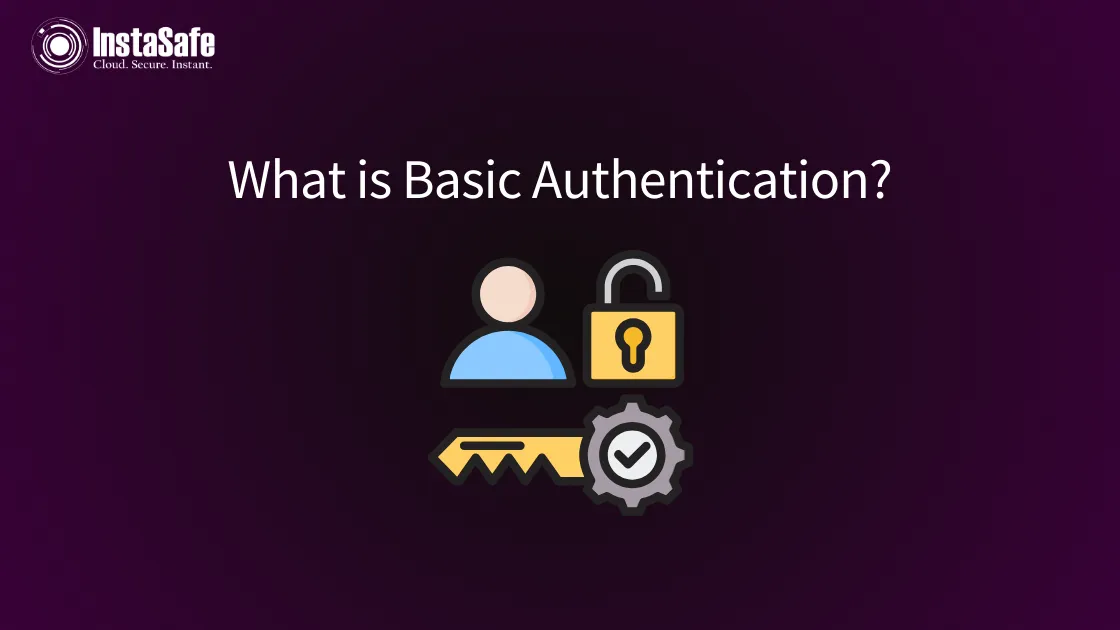What is Basic Authentication?

Authentication is a significant step for authorising access to a user. It is necessary to ensure the legitimacy and authenticity of the user in order to provide access for the smooth administration and overall safety of the network.
Basic Authentication provides a primary security framework that utilises the username-password method to authenticate the identity of the user at the time of login or other requests. Let us understand what Basic Authentication is and how it works!
What Is Basic Authentication?
Basic Authentication, also known as basic access authentication, is an HTTP-based form of communication. it is the basic requirement for a user to complete in order to access the network or account. This form of authentication includes the traditional username-password method. It is embedded within the HTTP protocol and is the foundation of online security.
That being said, it is not like the login method where the user’s username-password is registered and they put in their particular credentials.
When the user requests to access their account on a network, the webpage will need the user to enter an accurate username and password.
Basic Authentication uses a universal pair of credentials instead of using unique credentials for every user. That way, the system can grant general or standard access to the user as per the settings.
How Does HTTP Basic Authentication Work?
Basic Authentication, also known as HTTP Basic Authentication, is the simplest and primary form of authentication. Let's understand how it works.
- The user sends a request to access the network through configured means, like an account, portal, or application. If this web page has configured Basic Authentication, the header will notify you about wanting an authentication pass.
This header includes the configured form of authentication and also the server realm that is being secured using the authentication.
2. The access request will be transferred to the central web server after notifying the user about needing to authenticate. The web server sends a request about username and password along with a small login pop-up portal.
3. The user will fill up the credentials in the pop-up box that is provided by the server. The user can receive these credentials in multiple ways.
4. Once the user enters those credentials, the webpage sends the encoded/encrypted information to the server. The server decodes/decrypts the information and verifies the accuracy of the credentials.
5. The basic authentication scheme is “Authorisation: Basic <credentials>”. Where the credentials (username and password) are encoded with base-64 and joined by a single colon “:” and transmitted over the network.
6. If the credentials are identified and the user is authenticated, they are granted access. If the credentials do not match the information on the server, the user will be denied access to the network.
The basic authentication procedure protects the credentials with encryption and decryption methods and secures the network from unauthorised access.
Basic Access Authentication Example
Suppose you are a customer of a particular brand that has created a personalised space online to access customer information that includes product history, discounts available, coupons, and other things. You have to log into the portal in order to get all of this information; let us call it the customer portal.
In this case, the brand administrator will provide you with credentials that are universally used by all the customers or are personalised by the brand’s webpage itself. You will have to access the customer portal by entering the provided username-password in the login portal.
This controlled access allows the brand to personalise services and secure customer details from the internet.
Closing Remarks
Basic Authentication is deemed to be the foundation of access authorisation systems in the digital world, and rightfully so. Basic access authentication has been securing networks since the year 1993.
As cybersecurity threats increased, the need for advanced and complex authentication systems increased. Today, we have numerous systems that personalise and manage access by identifying and verifying a user’s identity.
However, you should note that since the username and password are only encoded with base-64 and no other security mechanisms, they can be easily decoded. Hence, we recommend using basic authentication in tandem with other security mechanisms.
This is where we come in. With Instasafe, you can create a protected environment for your networks. Our security solutions like Zero Trust Network Access and Multi-Factor Authentication provide complete control over the access of your network!
We hope you found this blog helpful!
Frequently Asked Questions (FAQs)
1. Is basic authentication secure?
Even though basic authentication is not immune to modern-day threats like hacking, theft, and breaches, it can be secure. One can secure the server and configure various security features along with the basic auth.
You can always opt for better and more modern security options that can better protect your network and server.
2. Where is the username-password stored?
The credentials required for the authentication are usually stored on the server. It is stored in a file “.htpsswrd file.” When the user enters their credentials in the system, the server compares them with the stored credentials to verify the accuracy and identify the user.
3. When should one use basic access authentication?
Basic access authentication can be used when you think that the normally registered username-password can be intercepted, stolen, or breached. You can utilise SSL encryption to protect the Basic Authentication username and password.
